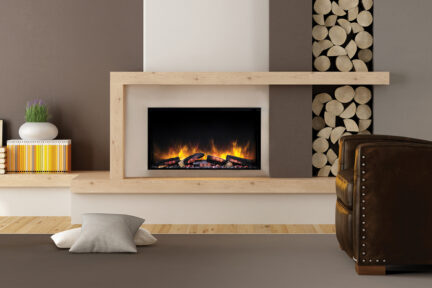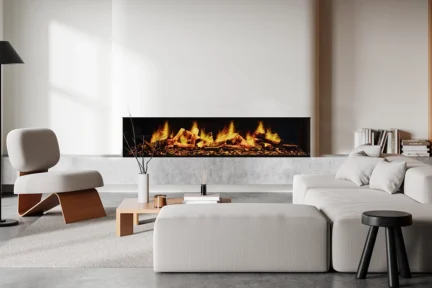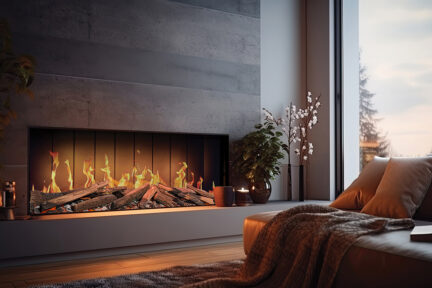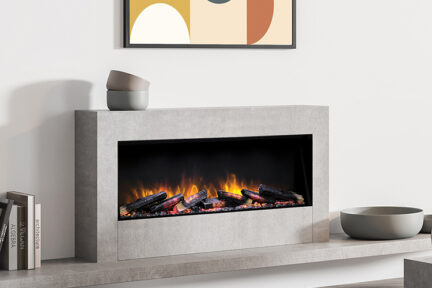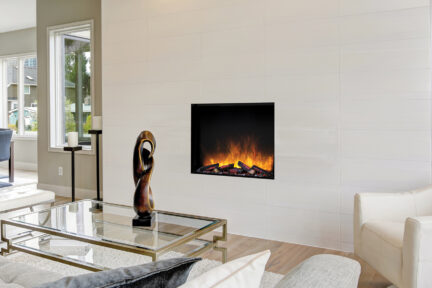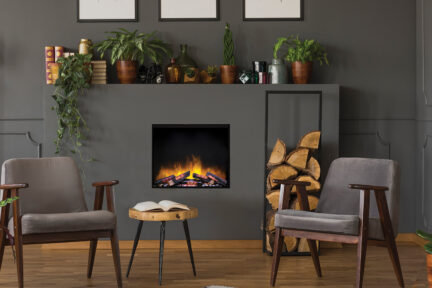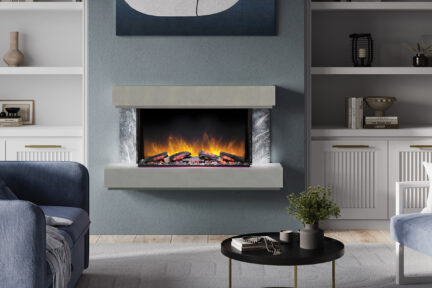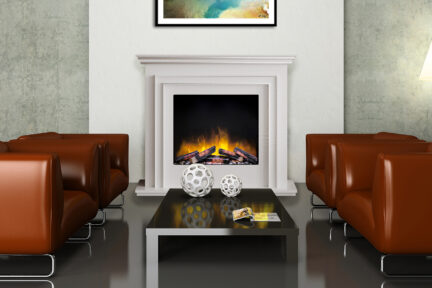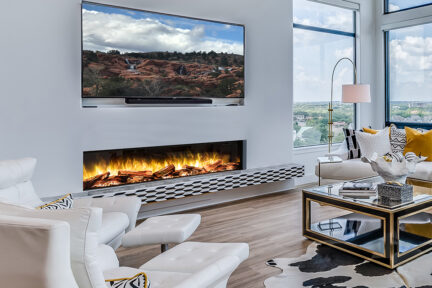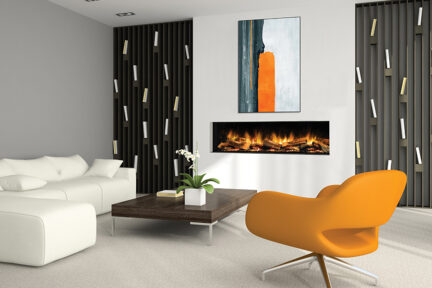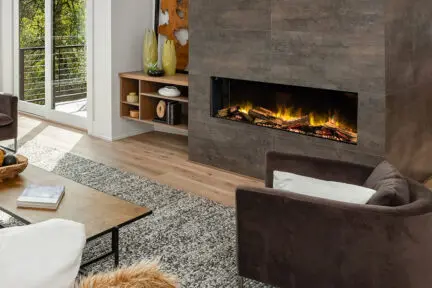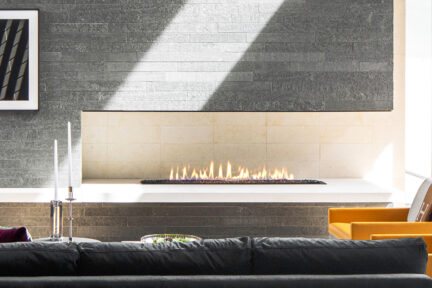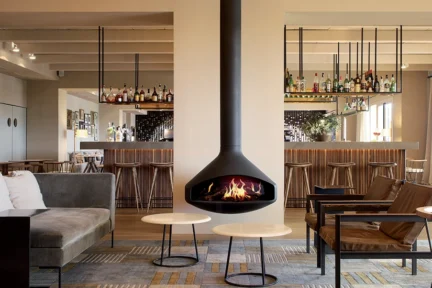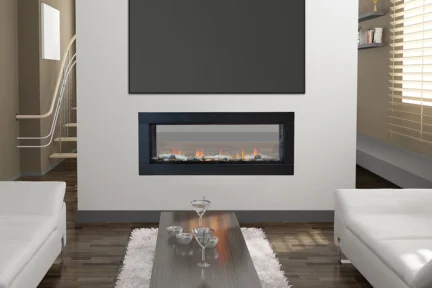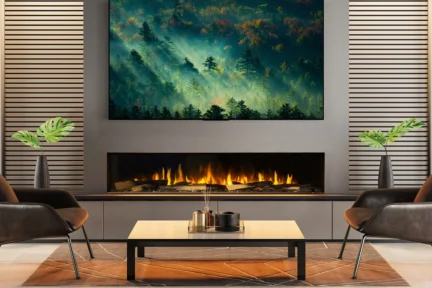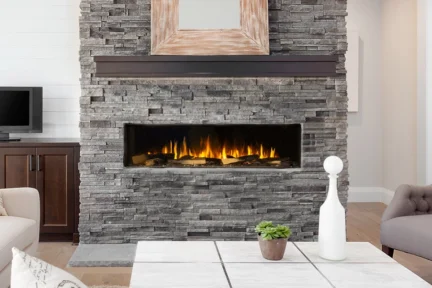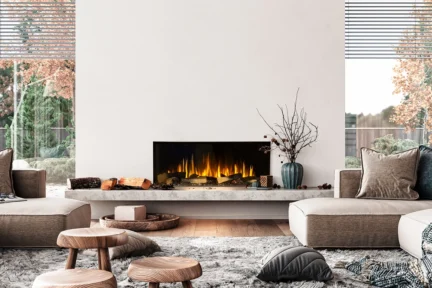Filter by:
Size
Configuration
Fuel
Burner
Model
Location
Vent
Optional Features
Brand
Unfortunately, we don't have a matching fireplace for the criteria you've selected. If you'd like help with choosing a fireplace, please contact us.
Which fireplaces are approved for use in California? With the California Building Code being as comprehensive as it is, it can be difficult to know exactly which fireplaces are or aren’t allowed. Luckily, we have put in the work for you. The pre-curated list below only includes our products that are approved for use in CA. Connect with a local, and knowledgeable, California Fireplace Dealer once you have found the perfect fireplace and they can fill you in on the rest of the California guidelines.
Design Professionals
Please visit our Technical Resources page for CAD, BIM, 3-Part Specs, and even opportunities for AIA CEU credits. Or Contact Us if there’s anything else you should need.
Fireplace Codes: What Fireplaces can I Install in CA?
When it comes to state firsts in the United States, California is at the top of the charts in a number of categories, including having the country’s largest population and GDP. In fact, the Golden State is also the largest agricultural producer in the country and has the most colleges of any state in the union.
While those are all noteworthy achievements, California is also derisively referred to by some as the “nanny state.” Why? The presence of over 150,000 health and safety laws might give you a clue. That’s tops in the nation as well.
More importantly for anyone in the building trades, it’s California Building Standards Code Title 24 book has a shipping weight of 2.7 lbs. In other words, it’s a behemoth of a book and it can take a degree from one of those 400+ California colleges to wade through it and figure out what information you need.
Jump to Chapter 10 [and Skip the Rest]
Thankfully, when it comes to getting information on fireplace regulations in California, they’re contained in Part 2.5, Chapter 10 of the code book. And like most other states, these codes are based on the 2015 International Building Codes.
As any working architect or building trades professional is well aware, these code books are updated every three years. Chances are slim that the updates will directly affect codes dictating fireplace regulations in California, but it’s always good to check the California Building Standards Commission website to stay abreast of any revisions. It’s certainly cheaper than dropping $300 on a new code book.
To save you a little time, here are some highlights:
- Vent-free gas appliances are prohibited statewide.
- If installing a vented fireplace in a bedroom or bathroom the fireplace must adhere to the following guideline:
To understand that last bullet point let’s take a look at this formula:

Now let’s see that in action for a fireplace that produces a maximum of 38,200 BTUs:
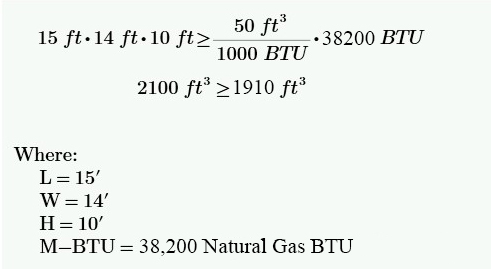 So in this case a room of 15′ x 14′ x 10′ (2,100 ft3 ) is big enough for the fireplace which only requires 1,910 ft3
So in this case a room of 15′ x 14′ x 10′ (2,100 ft3 ) is big enough for the fireplace which only requires 1,910 ft3
Don’t Forget the Locals!
In a classic case of the tail wagging the dog, California state law authorizes local governments to enact ordinances that amend the Title 24 codes in their jurisdiction.
For example, the Bay Area has enacted a California “Spare the Air” alert, which bans wood-burning of any kind when the alert is in place. In addition, Orange County, portions of Riverside, Los Angeles, and San Bernardino counties don’t allow the use of EPA Phase II wood-burning fireplaces at any time.
These scattershot prohibitions mean that building trades professionals should take the guesswork out of the equation by checking in with the municipality where the home or commercial building is located. Better safe than sorry!
In this day and age of easy digital information access, it would be safe to assume that the state would provide an updated list of local wood-burning ordinances. But alas, one hand doesn’t know what the other’s doing! You’ll need to pick up a phone and call the local district office of the California Air Resources Board.
Traditional Masonry vs. Factory-Made Fireplaces
How do the rules differ for these two categories?
Now that we’ve identified the code dictating the rules governing fireplaces and chimneys in California and where to find them, what specifics will affect the installation of a factory-made gas or wood-burning fireplace?
It’s important to make the distinction between a masonry fireplace made of brick or stone and a factory-made fireplace made of steel or other manufactured materials.
That’s because the Title 24 codes primarily address the construction of masonry fireplaces and chimneys. Details like required hearth dimensions and clearance to combustibles, the slope angle of the firebox, and load-bearing supports are some of the key issues covered by the codes.
If you’re considering adding a traditional masonry fireplace to a new residential design and the local ordinances allow it, then these codes are highly relevant. Remember to consult with the local jurisdiction on whether there are prohibitions on masonry fireplaces.
With Factory-Made Fireplaces, the Onus to Build to Code is on the Manufacturer
If it’s a factory-made fireplace your project calls for, whether wood or gas, the manufacturer’s specifications largely determine where and how they can be installed. Let’s not lose sight of the fact that certain products may be perfectly fine for other states (or even other parts of CA), but that doesn’t necessarily mean they conform to all of your residential building codes. A local hearth dealer will know what is and is not approved in your area.
When it comes to manufacturer specifications, that introduces an alphabet soup of governing standards, but lucky for you, a good fireplace manufacturer has put in the work for you.
For wood-burning appliances and accessories like Class A chimneys and hearth pads, manufacturers obtain Underwriter’s Laboratory (UL) certification. The Northbrook, Illinois-based lab provides safety certification for a wide range of products.
The American National Standards Institute (ANSI) is the gold standard stamp of approval for gas appliances. Founded 100 years ago this October, ANSI oversees voluntary product standards and performance criteria across a broad range of industries.
All European Home fireplaces are either UL or ANSI listed.
Choose your Fireplace Professional Carefully
Just make sure you are working with a fireplace professional who recognizes that professional codes and standards are crucially important to make sure your project is code compliant and safe.
Experienced hearth professionals can reel off facts and figures like the 3’/2’/10’ chimney height rule, the maximum degree offset (30) for a wood fireplace chimney, and a plethora of other crucial performance and safety standards in their sleep.
Just as importantly, however, they can also consult with architects and designers on sizing a gas or wood fireplace to fit the heating needs of the space. Or on how to connect outside air to the fireplace to maximize efficiency. Or where the best place to place a thermostat might be.
In short, all these codes and standards can seem overwhelming. For architects dealing with a myriad of code concerns across many disciplines, all the more so.
Find a trained local fireplace professional by using this handy Dealer Locator.
What You Need to Know
The absolute best ways to avoid headaches and ensure that the fireplace you sketched in makes the homeowner ecstatic are simple:
- Identify a fireplace manufacturer whose products are top quality and who is committed to providing you with the best solution for you and your customer.
- Establish a strong working relationship with a hearth professional who is knowledgeable and cares just as much as you do about the end result.
In short, if you are working on a project in California that includes a factory-made wood or gas fireplace, think of the Barnum & Bailey ringmaster model: assemble a skilled and exacting team who can jump through the hoops and you can breathe easy and take a bow at the final curtain.
Learn more about fireplace manufacturer, European Home, and our line of distinctive modern gas, electric, and wood fireplaces, or find an authorized fireplace dealer in your area.

